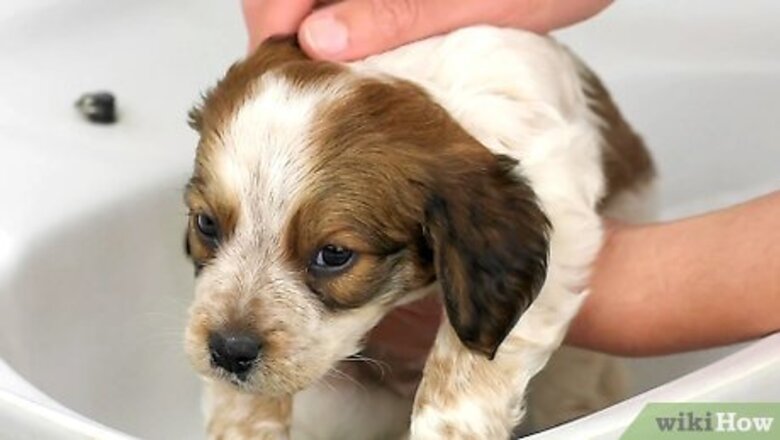
views
Preparing to Bathe Your Puppy
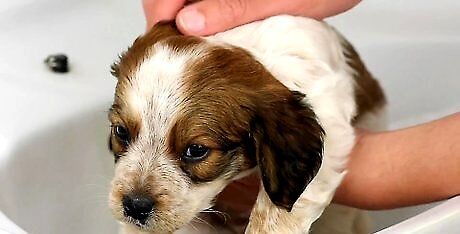
Make the bathing area a positive space. Before giving your puppy his first bath, play with him in the bath or sink a few times without any water. Go slowly and convince your puppy that a bath is a good thing. He may not adjust to the water as quickly as you might've thought. Your pup might not enjoy the bath the first few 20 times, but don't give up! You can do this. Make your pup think of water as a game and not as its enemy. Give him treats and lots of praise — make sure he thinks of it as a fun place. Give him free reign to sniff and investigate to his heart's content. Take a few days to let him get used to the area. He should be completely comfortable in the bathing area before his first bath. If the puppy is very small, choose the kitchen sink as a bathing location. It will be more comfortable for both of you.
Introduce water slowly. Once the puppy's familiar with the bathing area when it's dry, start getting him used to the idea of water. Run the water while he's not in the tub or sink to get him acclimated to the sound. Splash a little water on him to show him it's nothing to fear. Make sure the water is lukewarm, as water that is too hot or too cold can upset your dog. Once he's comfortable enough, fill the tub or sink with a little water and play with him in it. Use plenty of treats and praise, and never rush a puppy who seems hesitant or fearful.
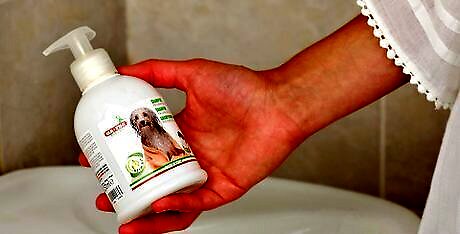
Buy a shampoo formulated for dogs. Dogs and humans have very different skin needs, so you can't use human shampoo for your pup. Using human shampoo will dry out his skin and leave him vulnerable to bacteria, parasites, and viruses. Buy a nice mild Oatmeal shampoo specially formulated for dogs at the pet store instead.
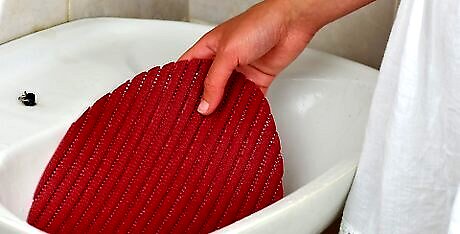
Prepare the bathing area. Place a clean, wet washcloth on the bottom of the sink/bath so the pup won't slip when it's filled with soapy water. You can also use a non-skid mat. A puppy who thinks he may fall will be fearful and uncooperative.
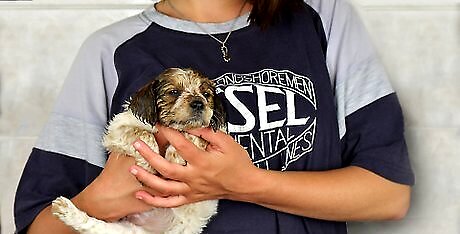
Dress appropriately. You don't want to ruin an nice outfit with water, dog hair, and shampoo. Instead, dress in comfortable clothes that need to be washed anyway. Expect them to get wet and dirty, as there may be wet cuddles and frequent shakes from the puppy. Pull hair into a high bun or ponytail. Remove all makeup and chemicals from the face to make sure your cute puppy doesn't splash all the makeup onto the counter or even dirty the water and dye your pup's fresh coat. Your bathroom may also get wet, so be prepared for that as well.
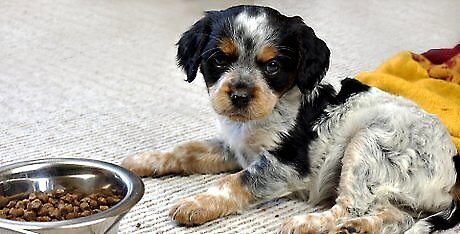
Foresee potential distractions. You don't want to get pulled away by something that needs your attention in the middle of the bath. Make sure other pets or children are supervised, that nothing's cooking in the oven or stove, and you're not expecting an important call or visit.
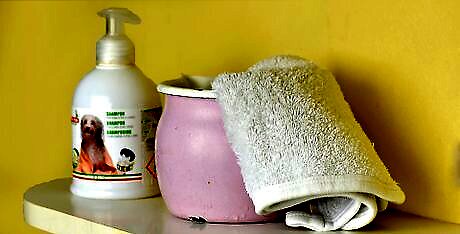
Gather your supplies. Before you bring the puppy into the bathing area, make sure you've lined up all your tools. You'll need your dog shampoo, a cup or jug to help with rinsing, and lots of towels. You should also keep treats on hand to help your puppy connect the bath with a positive experience. Also keep a hairdryer if your pooch needs an extra drying process because of its thick coat.
Brush out the puppy's coat. Mats and tangles are easier to remove when the coat is dry, so do this before the bath. Using a dog comb, gently tease out mats and tangles, making sure not to tug on his fur and cause pain. Be patient and remember to give lots of praise. Your puppy needs to get used to grooming!
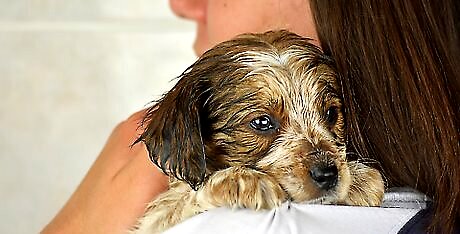
Make the puppy as comfortable as possible. He should have recently gone to the bathroom, so he doesn’t feel bladder or bowel pressure. The temperature in the house should be warm enough to keep him from feeling too cold when soaked. The bathwater itself should be lukewarm — less than what you would find comfortable in your own bath. Test the water the way you would a baby bath, using your wrist or elbow. If it feels warm enough for your own bath, it's too hot for a puppy! The water level should reach about half the dog's height to prevent any chance of drowning.
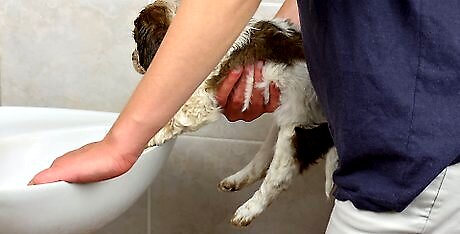
Take a deep breath and relax. The very idea of bathing an anxious, excitable puppy may stress you out. If you're stressed, your puppy will pick up on your emotions! The calmer you stay (as the puppy's "pack leader"), the calmer he'll be. Put on some calming, quiet music to soothe yourself and lead by example. Make sure to use a happy, calm voice to reassure the puppy that you are there and all is well. Waiting until any children are out of the house might be a good idea. Giggling and screeching may stress the puppy out. At the very least, don't let anyone tease him during bath time, or he'll learn that bathing is something to be feared.
Bathing Your Puppy
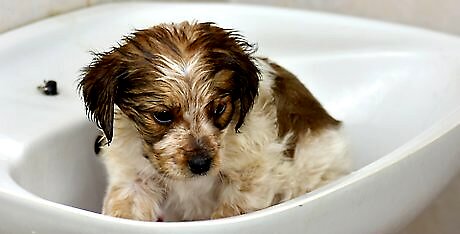
Carry the puppy into the bathing area. Don't ever call a dog to you when you're about to do something it might not like. It's very important that your call is always associated with positive experiences. That way, he'll always come when called instead of avoiding you or running off. “Come” is a potentially life saving command, and you can ruin the puppy’s response to the command with one bad association. Without chasing him down, pick up the puppy and take him calmly to the bathing area. Talk happily and calmly to him the whole time. This isn't a race, so don't put pressure on yourself or the puppy.
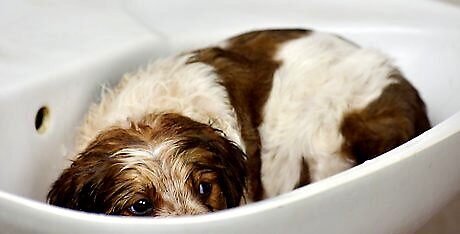
Close off the bathing area. Once in the bathroom, close the door so that your puppy will be unable to escape. This may stress him out, so take some time to cuddle and play in the closed bathroom to relax him before the bath.
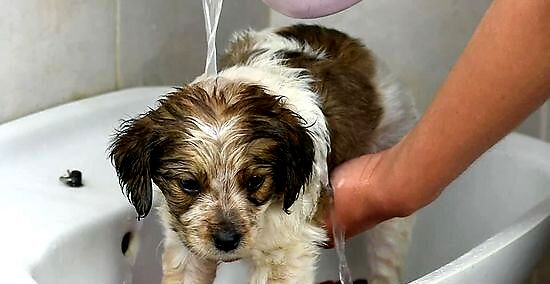
Place the puppy in the water. Once he's calm and happy, lift the puppy up and place him gently in the water, hind legs first. Make sure his head stays above the water. The water should only reach about halfway up his body, so use your cup to gently and slowly pour water over the dry parts. If you have a hand-held shower or low-pressure faucet head, you can use that. Don't use it if it scares the puppy, though. Talk soothingly, and give praise and treats.
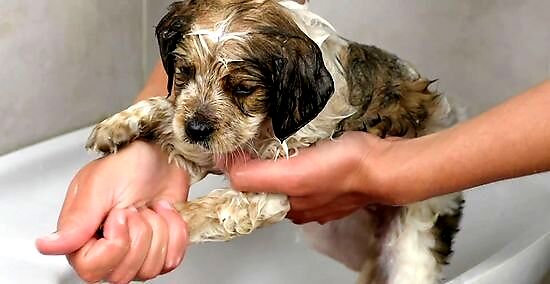
Apply the dog shampoo. Pour a little bit of shampoo into a cupped hand and work it into the wet fur with your fingers. A little shampoo goes a long way, so don't overdo it. If you use too much shampoo, you'll be stuck rinsing your puppy's fur forever! Don’t neglect the puppy’s tail, which also needs shampooing.
Restrain the puppy gently if necessary. If seems like he's going to try to leap out of the water, keep a soothing hand on his back. Make sure not to manhandle him, but to guide him into the best position. Talk to him soothingly the whole time, and always move slowly. Jerky, sudden movements might cause a scared reaction that could lead to injury in a slippery tub. Praise and cuddle him to show him that being restrained isn’t a terrible thing.
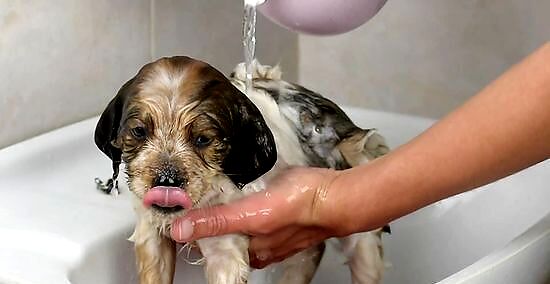
Rinse out the shampoo. Once you've soaped up the puppy's body and worked the shampoo into the coat, it's time to rinse it out. Use the shower or faucet nozzle if it doesn't scare the puppy. If it does, use your cup or jug to pour the bath water over him. Either way, always avoid getting water on the head and ears, as it could cause an ear infection or frighten him. Drain and replace soapy water if necessary. Bear in mind your puppy might get cold and start shivering, which you don't want. It's important that all soap be removed from the coat because residue can cause itchiness. Take your time and be thorough.
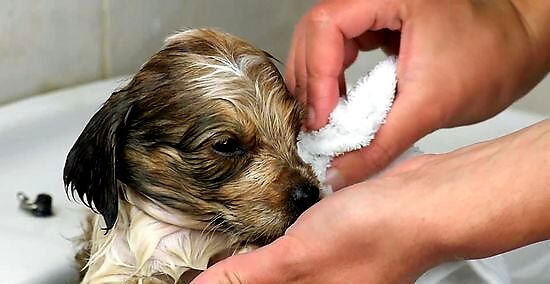
Consider your options for washing the head. You don’t have to get the head wet at all in many cases, and this may be something to introduce slowly at another time. If you do wet the head, you don't want to just dump water over it, as it could frighten him or cause ear infection. Instead, consider one of the following methods: Using your cup, gently pour warm water over the puppy's head from behind the skull and avoiding the face. Tip his nose up so the water runs down and over the body, away from his nose and eyes. If this is too much for your puppy, use a very wet washcloth (no soap) to clean the face. Another method for getting the face wet is to cover the ear holes with his ear flaps. Gently guide his nose down to the floor and pour water to flow over the back of the head. Your hand will cover the eyes while holding the earflaps down. Be careful about protecting the ears with cotton balls. Remember to remove them after the bath, and don't use them at all if they distract the puppy and make him shake his head a lot.
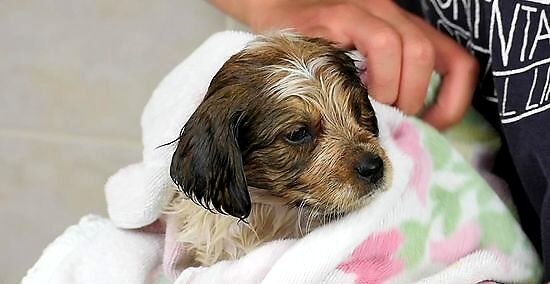
Dry your puppy off. When you've thoroughly rinsed all the soap from the puppy's coat, it's time to dry him off. Remove him from the tub and wrap him in towel, leaving the his head exposed. After a gentle initial rubdown, leave the towel on him and put him on the ground. Let him shake to his heart's content — the towel will contain much of the water and cut down on mess. You may want to even give him a command while he does this so he knows it's ok to shake water off of himself. Make a big fuss over what a good boy he is, and give lots of praise. Towel dry his body as best you can. Be very gentle with his head and face. Set aside an ugly old towel that you'll only use on the dog.
Be very careful using a hairdryer. Never use it on a high heat setting, as it's very easy to burn your puppy's skin. If you must use a hairdryer, set it to an "air" setting without heat. This unusual sound and feeling might frighten the puppy. Introduce him to it slowly well before his first bath, like you did with the tub and water. Use play, praise, and treats to make it fun. Avoid directing air toward his eyes, as they'll dry out.
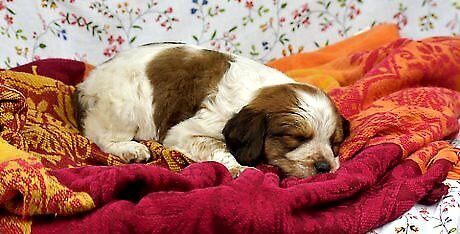
Keep the puppy in a warm room. Until he's completely dry, don't let him go anywhere he could get cold. You also don't want him getting his wet dog smell all over the house, so keep him out of bedrooms, kitchens, or anyplace else you don't want him to make a mess. There's a good chance he'll run around and shake water everywhere after a bath, but this is to be expected. It's easiest to embrace this as part of puppy life.
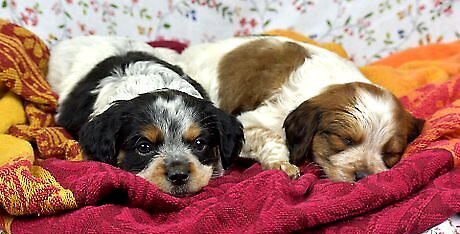
Consider getting professional advice. If this all seems too much for you and your puppy, consider contacting a professional groomer. Ask about their process for bathing puppies for the first time. You may take him to a professional for his first bathing, but ask to observe and get tips. If your puppy hasn't finished his vaccination series, you'll need to take special precautions before taking him to a groomer. The puppy should be the only customer first thing in the morning to protect other dogs. The groomers will have to disinfect the tub, cage, and grooming table after he's gone.












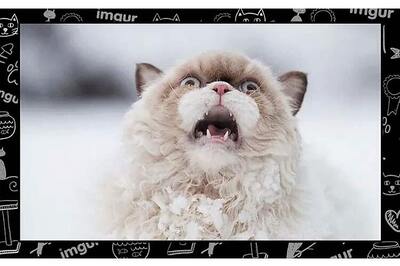
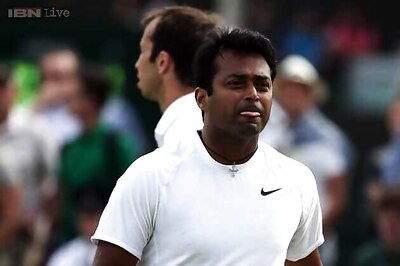

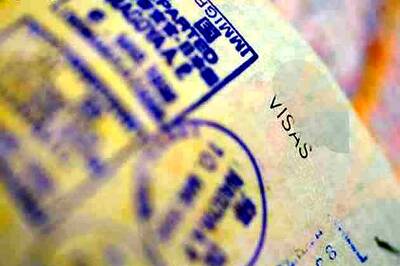



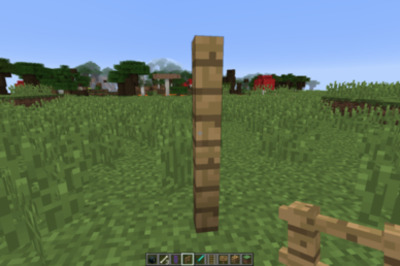
Comments
0 comment